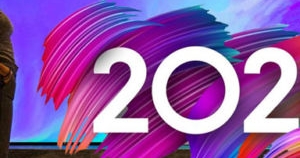With the holiday season fast approaching, Nanolumens is revisiting our predictions for what became a very different year than we expected.
The new year is here and the video wall landscape certainly looks a lot different from how it did this time last year. We expect it will evolve even further over the course of 2020 and we’ve highlighted a few particular areas we think might experience some noteworthy changes. Here’s a quick look at a few trends Nanolumens predicts to gain traction in the coming year.
Surprising New Use Cases Will Emerge as Video Wall Products Become More Accessible
Despite carrying a pricey reputation, LED displays have gotten more and more affordable over the last year or two as manufacturers learn to optimize their operations and technology becomes more widely available. Manufacturers have also gotten more creative with how they market and sell their products, so smaller-budget customers who may have felt LED beyond their reach are now met with an array of options well within their means. These new entrants into the LED display market will represent verticals that have been traditionally underserved by large-format digital displays. We predict 2020 will see displays more frequently serve applications in places like museums, smaller academic buildings, train stations, and even restaurants, banks, and grocery stores.
Airports Will Explore New LED Display Shapes
Airports have long been home to displays of impressive size but recently a few have started playing around with distinct shapes for their powerful display products. Charlotte Douglas International already has huge trapezoidal displays while San Antonio International has a display of their own in the unique shape of a quatrefoil. As airports start to invest more heavily in digital displays for artistic purposes, they’ll try to squeeze aesthetic value from not just what the display shows, but how it is shaped, too. Other transportation hubs will likely get in on this action as well, inspired by locations like the Brightline station in Miami to introduce unique display features like a four-sided diagonal column that give their space a vibrant and distinctive feel.
Pixel Size Will Shrink but Will the Market for These Products Grow?
Pixel pitches will continue to shrink as the technology (and demand for it) improves but shrinking the pixels themselves is likely to be the bigger story in 2020. While industry pros and customers alike are generally aware of MiniLED and MicroLED, these products are still not fully established -or understood. So far, MiniLEDs have found success in the personal electronics sector backlighting products like smartphones, televisions, and automotive displays. Despite the success in these niche areas, MiniLED is not cost-competitive with traditional LEDs and it ought to be considered less of a like-for-like substitute and more of a use case-specific alternative. As for MicroLED, there is general indecision amongst the display manufacturing community about where and how exactly MicroLED will be most successful moving forward, but the technology is currently deployed in a few personal electronics products. A general rule in the LED industry is that if you don’t need a tighter pitch it’s not worth paying for and outside of wearables, no other application needs the microscopic pitches of MicroLED. It’s hard to say what exactly the future holds for these emergent technologies but it seems safe to say they will be heard from in 2020 – even if only in high-minded think pieces and flashy trade show demos. But before you head into 2020, be sure to take a look back at the best of 2019!
RELATED: Here’s our look back at Nanolumens in 2019.

